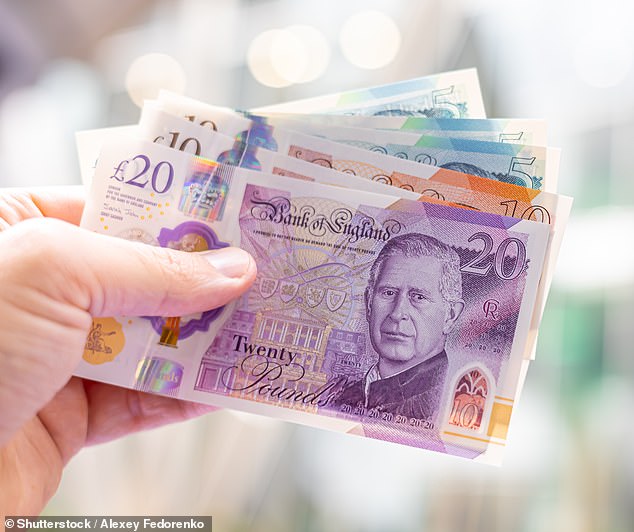Anyone heading to the United States this August is in for a pleasant surprise once they have managed to navigate Donald Trump’s immigration checks. The pound, after a long period in the doldrums, is looking resilient.
Gone should be the days when money changers at Heathrow and other airports would offer sterling and dollar parity at best.
In recent trading the pound stood at a healthy $1.34 and had also perked up against the euro.
This might seem odd. After all, there have been days of dire headlines highlighting Britain’s fiscal weakness and the likelihood of further tax increases this autumn, after last October’s £40billion bombshell.
Moreover, the Bank of England’s reluctant cut in interest rates to 4 per cent last week came with a sting.
The pace of further cuts will be slower because UK inflation is heading towards 4 per cent. That’s almost twice the pace in the EU. The Bank is finding it hard to tame inflation due to a poorly designed energy policy, the rising cost of services and demands for ever higher pay despite a weakening jobs market.

Cash in hand: A stronger pound makes the UK less competitive in a more fragmented world with higher trade barriers
Historically, the City and political establishment regarded the valuation of the pound, especially against our single biggest trading partner the US, as a barometer of performance. It was the collapse of sterling which forced the UK into the hands of the International Monetary Fund way back in 1976.
The pound tumbled to frighteningly low levels as markets absorbed the impact of Liz Truss’s mini-Budget in 2022. So why has the pound risen in recent months?
Trump’s ‘Liberation Day’ tariff mayhem in April sent investors scuttling out of the dollar. The result has been gold prices at a record and a rally for crypto. More serious investors diversified into the euro, the Swiss franc and even the pound.
This trend was accentuated by Donald Trump’s ‘big, beautiful’ tax bill which is estimated eventually to add $2.4trillion (£1.78trillion) to the US gross national debt. It already stands at a hefty 120 per cent of total output. Investors in sterling will also enjoy higher returns than in Europe, with the bank rate expected to stay at 4 per cent until at least November.
Read More
Tourist tax driving rich Americans to shun London in favour of Paris and Milan

The official rate for deposits at the European Central Bank in Frankfurt is 2 per cent and there are expectations that America’s borrowing costs also are heading down. The economic impact of the stronger pound is two-fold.
The Bank of England’s August monetary policy report shows a benefit. The stronger the pound, the bigger the barrier it offers against inflation brought in from overseas. Import prices are projected to fall 1.25 per cent this year, with some smaller decreases in future years. Dollar-priced energy costs should also decline.
In the past, when the UK has been in trouble governments have reached for the tool of devaluation. Arguably the last period of robust growth for Britain came when the pound fell out of the exchange rate mechanism in 1992, triggering a stronger export performance.
But a stronger pound makes the UK less competitive. That is not a great place to be in a more fragmented world with higher trade barriers. Visitors to London will find it more expensive than ever. More reason for Rachel Reeves to stop penalising tourists (and British retail) by failing to refund VAT on goods purchased here. It is driving deep-pocketed shoppers overseas.
DIY INVESTING PLATFORMS
Affiliate links: If you take out a product This is Money may earn a commission. These deals are chosen by our editorial team, as we think they are worth highlighting. This does not affect our editorial independence.
Compare the best investing account for you
